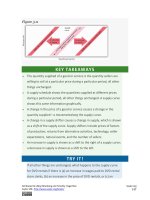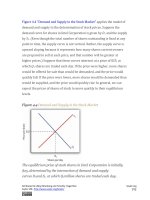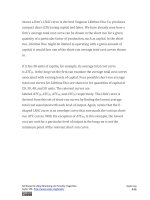Authors libby rittenberg 112
Bạn đang xem bản rút gọn của tài liệu. Xem và tải ngay bản đầy đủ của tài liệu tại đây (437.18 KB, 1 trang )
Figure 2.18
6. Could a nation’s production possibilities curve ever shift inward?
Explain what such a shift would mean, and discuss events that might
cause such a shift to occur.
7. Suppose blue-eyed people were banned from working. How would
this affect a nation’s production possibilities curve?
8. Evaluate this statement: “The U.S. economy could achieve greater
growth by devoting fewer resources to consumption and more to
investment; it follows that such a shift would be desirable.”
9. Two countries, Sportsland and Foodland, have similar total quantities
of labor, capital, and natural resources. Both can produce two goods,
figs and footballs. Sportsland’s resources are particularly well suited
to the production of footballs but are not very productive in
producing figs. Foodland’s resources are very productive when used
for figs but are not capable of producing many footballs. In which
country is the cost of additional footballs generally greater? Explain.
10. Suppose a country is committed to using its resources based on the
reverse of comparative advantage doctrine: it first transfers those
Attributed to Libby Rittenberg and Timothy Tregarthen
Saylor URL: />
Saylor.org
112









